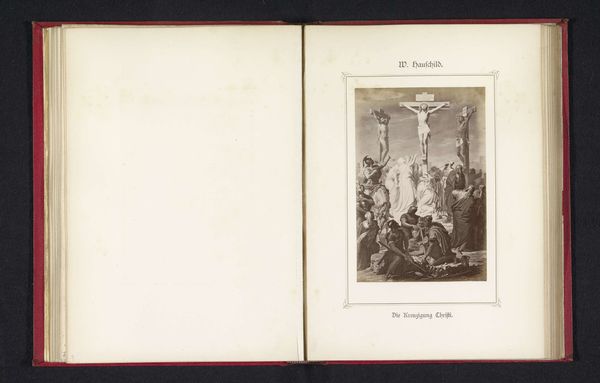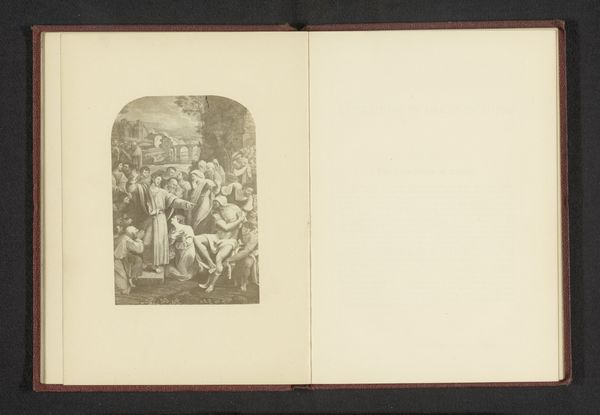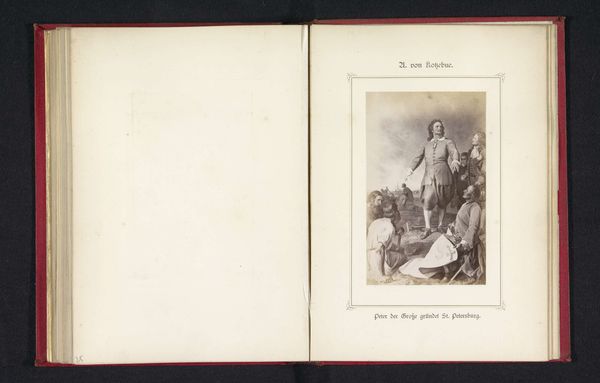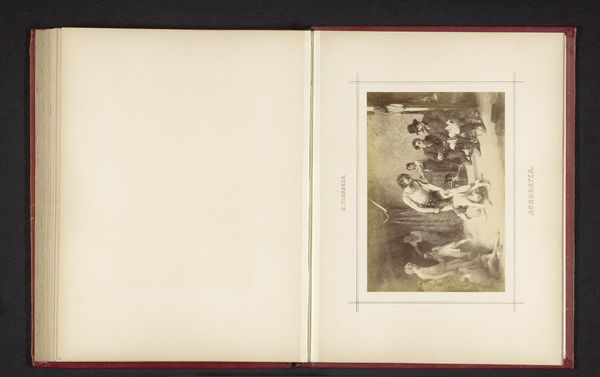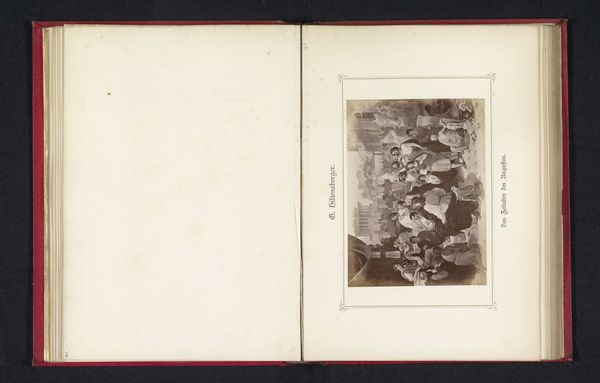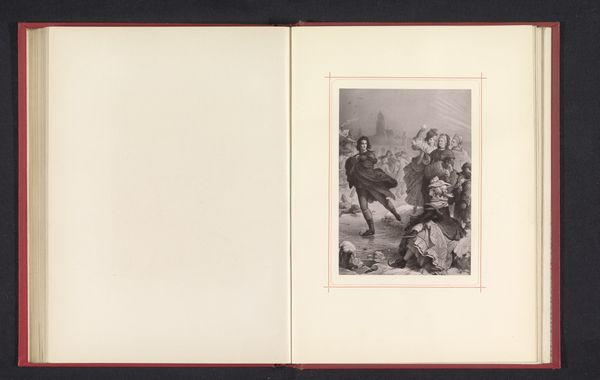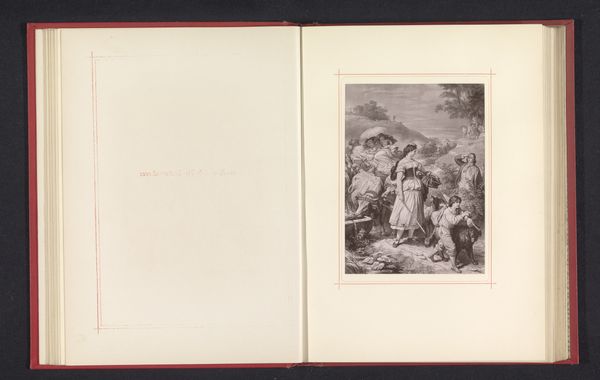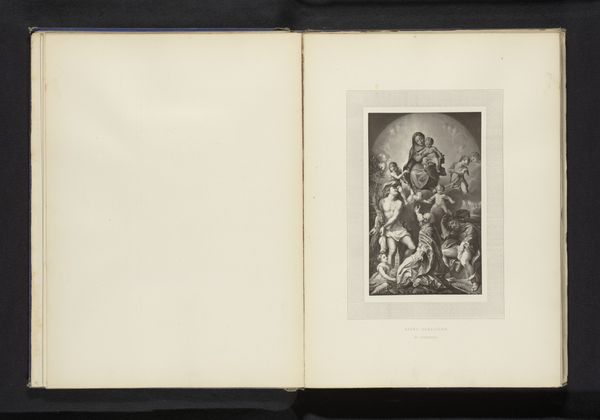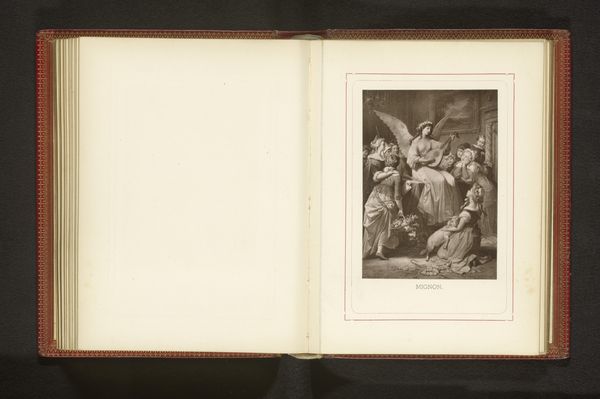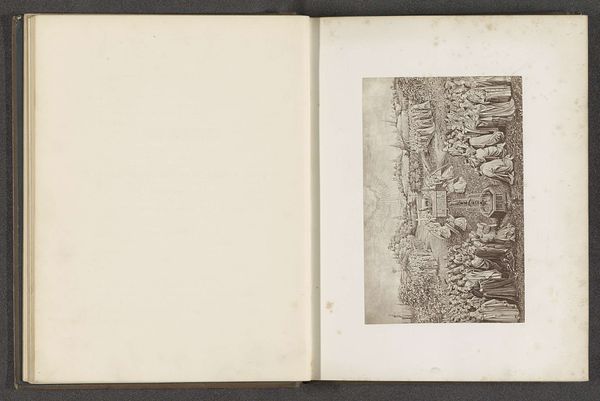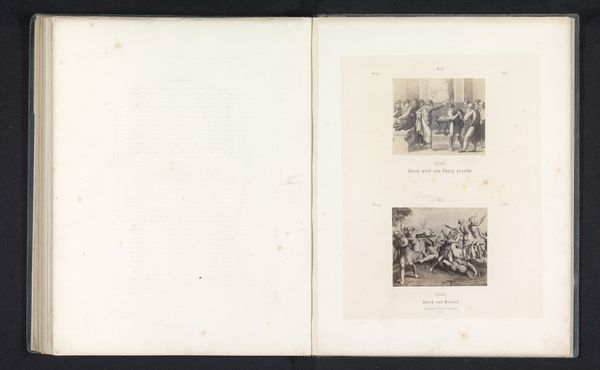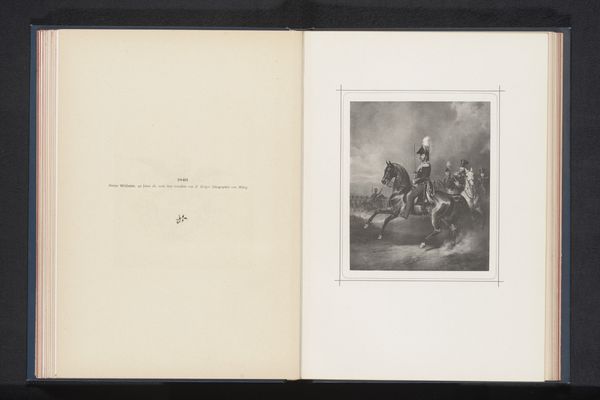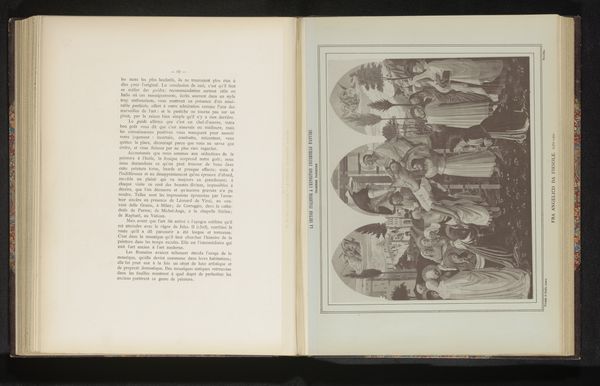
Fotoreproductie van een schilderij, voorstellende de belegering van Carthago c. 1875 - 1880
0:00
0:00
print, photography
# print
#
landscape
#
photography
#
ancient-mediterranean
#
history-painting
#
academic-art
Dimensions: height 135 mm, width 94 mm
Copyright: Rijks Museum: Open Domain
Curator: This striking print captures a moment laden with historical weight. Made circa 1875-1880, this photo reproduction, originally by an anonymous artist, depicts the siege of Carthage, a theme prevalent in academic art and classical landscapes. It is contained in an aged book with simple line border on the illustrated page. My first impression is the composition: dramatic and intense. Editor: Dramatic is right. You can almost smell the smoke from those burning buildings, feel the tension among the crowd assembled here, though really this "crowd" and their costumes are posed to celebrate power structures, hierarchies… this image stages this defeat as entertainment, devoid of real humanity. Curator: Yes, you're right to point out the performative aspect. Yet, something about the landscape itself speaks to a raw, untamed power, doesn't it? Even in defeat, there is this element of something enduring about the land itself, surviving everything. Editor: Endurance certainly comes to mind, and while I appreciate the beauty you find, my gaze immediately moves toward the symbolism of imperialism. Carthage, after all, wasn't just some city; it was a thriving center of commerce and culture that was strategically destroyed by a powerful enemy, echoing in colonial history the world over. We're invited to not only observe but endorse it. Curator: So, in seeing this "history painting," you perceive not just the defeat, but the ideology being subtly pushed? It's an unnerving perspective... I'm drawn in despite myself. The medium, a photo reproduction within a book, seems significant, too – democratizing the imagery for a broader audience. Was this a schoolbook maybe? Spreading not just knowledge, but perspectives, as you argue. Editor: Precisely. By reproducing and disseminating images like this one, it perpetuates certain narratives, validates specific victories, and—more crucially—silences those who suffered. It’s academic art turned propaganda machine. That interplay is really unsettling. Curator: I see now that even beautiful art can be manipulative, subtly. I initially admired the composition and classical allusions, and perhaps I got lost in them. Editor: That's why these dialogues are essential. We bring different readings to challenge each other and hopefully, inspire listeners to view the work with a more nuanced eye, fully interrogating the meaning in front of them.
Comments
No comments
Be the first to comment and join the conversation on the ultimate creative platform.
